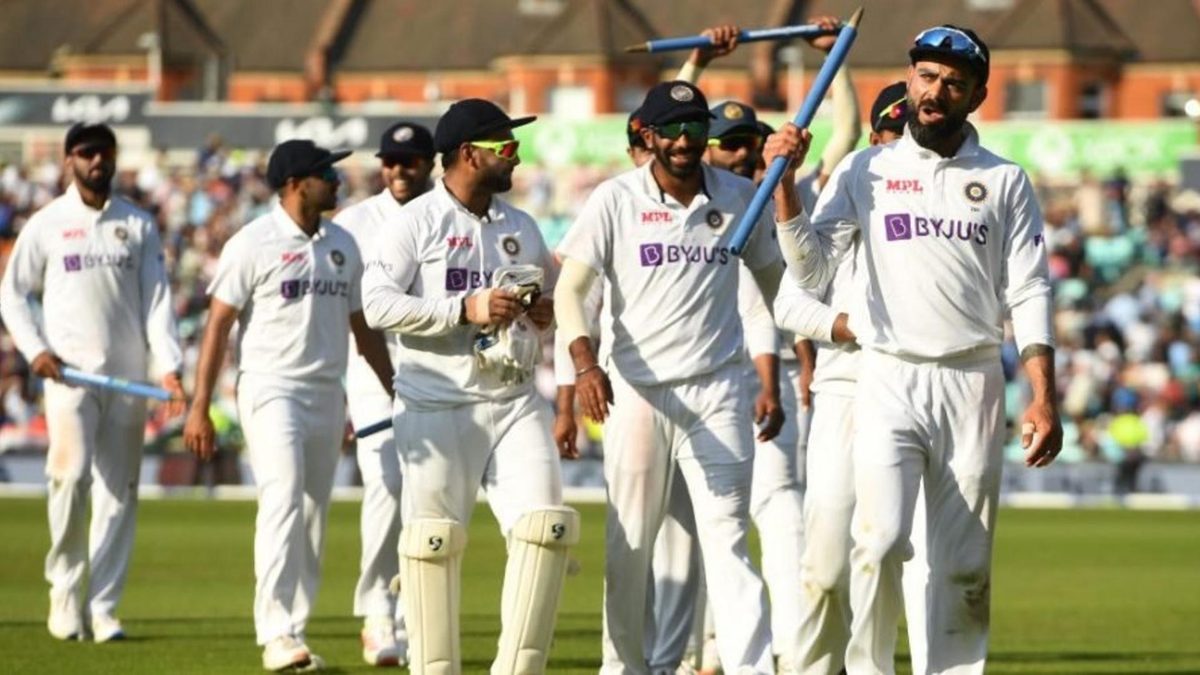
Through four brilliant acts of final-day domination this year, India’s Test side has shown tremendous character, ditching conservative tactics of the past to forge a brand new identity of victory before all, writes Aadya Sharma.
Ten years ago, India’s Test team, still struggling to find an identity away from home, received scornful criticism in the Caribbean after conceding the Dominica Test from a position of obvious strength. Then captain MS Dhoni and coach Duncan Fletcher were at the receiving end of public disapproval after seemingly relinquishing a chance to go up 2-0 (they were already 1-0), giving up on 180-run chase with 86 runs to win from 15 overs, and seven wickets in hand.
The Indian team was different back then – defensive, circumspect and hesitant in pushing boundaries. Away Test wins, let alone series victories, were too far and too few. Across the Nineties, India won just one away Test in 39 attempts – the number went up to 19 in 56 as the 2000s came about (yet, nine of them were against lower-ranked teams like Zimbabwe, West Indies and Bangladesh).
Now, in just the last 12 months, they have won two apiece in Australia and England.
There have been painful lows too – the 36-9 at Adelaide will rankle for a while, so will, to a lesser extent, the 76-run capitulation just two weeks ago. Yet, what happened after is what really tells us what this team is, the ability to put disappointment behind and walk out with a fresh slate for the opening ball of the next game.
On day five of The Oval Test, England had ambled to 100 for no loss – a draw looked imminent, but the partnership had made even the 368-run target look less improbable. Rory Burns and Haseeb Hameed were batting as if against tennis balls on concrete – the pitch flat, the sky clear, and the ball slowly losing its shine.
And then came Shardul Thakur, just four Tests old but already carrying the cheeky moniker ‘Lord’. Having already pushed the Test India’s way with the bat, he broke the nagging opening stand, prising open a window of opportunity for India that his teammates only widened over the next fifty overs. Ravindra Jadeja’s left-arm spin, wicketless for the first four innings of this series, burst open the dusty patches of the Oval; Umesh Yadav, playing his first Test of 2021, bowled with the nous of a spearhead, and Jasprit Bumrah, deemed ‘off-colour’ before this series began, stitched together a spell for the ages, his unremitting lines forcing the batsman to concede. It sounds like such a happy coincidence when all things fall to plan one fine day, but this isn’t serendipity but the careful intersection of skill and character on day five. India have now done wonders on the fifth day four times in the last nine months, and it’s fast becoming a long-yearned habit.
It began with the guts and grind of Sydney, when a short-staffed team, literally running on reserves, refused to back down from a fight. Hanuma Vihari, on one leg, and R Ashwin, rediscovering the fact that he can bat well, stuck together for 42 overs and prevented Australia from making a comeback in the series. It was a draw, but the unwavering resolve of the two batsmen made it feel like a win.
Then, in Brisbane, a see-saw Test reached day five with all three results possible – India needed 325 runs, Australia ten wickets, and when the visitors slipped to 167-3 midway through the day, it didn’t seem like they’d be able to survive the day. It was Rishabh Pant, still basking in the glory of his courageous Sydney knock, who pulled off another fifth-day masterclass, capping off the good work of Shubman Gill and Cheteshwar Pujara, and giving India a victory to remember. To do it twice in two games undoubtedly requires tremendous willpower and self-belief, one that this Indian team seems to be perennially dosed with.
Last month, they pulled it off again at Lord’s, a complete team effort if there ever was one. To bowl out England in front of the home crowd, after a gutsy contribution from the tailenders, really stood out as vindication for all the times India had relinquished advantages in the past on foreign soil.
Seven years ago, Kohli was the stand-in skipper when the Indian team went for the kill in Adelaide, losing by 48 runs after valiantly pursuing a target of 364 on the final day. Some would have questioned Kohli’s tactics then – India weren’t used to such brazen acts in 2014, and if you had any chance of saving a Test, you’d prefer the cautious route. Not under Kohli. “At no point did we back off. And we are not going to back off either,” the captain later said in Adelaide.
It introduced India to a whole new set of possibilities on the final day of a Test, and Sydney, Brisbane and London (twice) are all products of embracing that mentality. No longer is Dominica the norm, for no longer do India give up on the final day without a fight.








